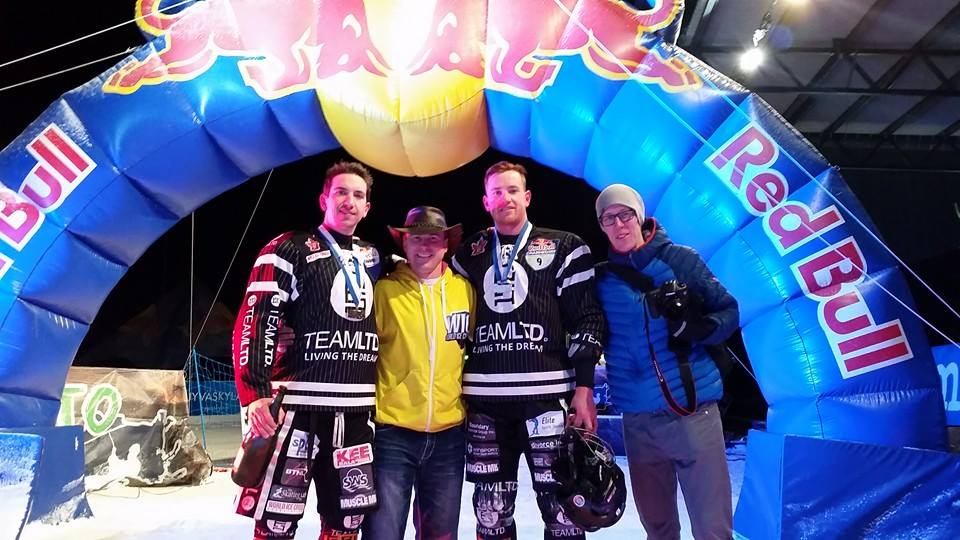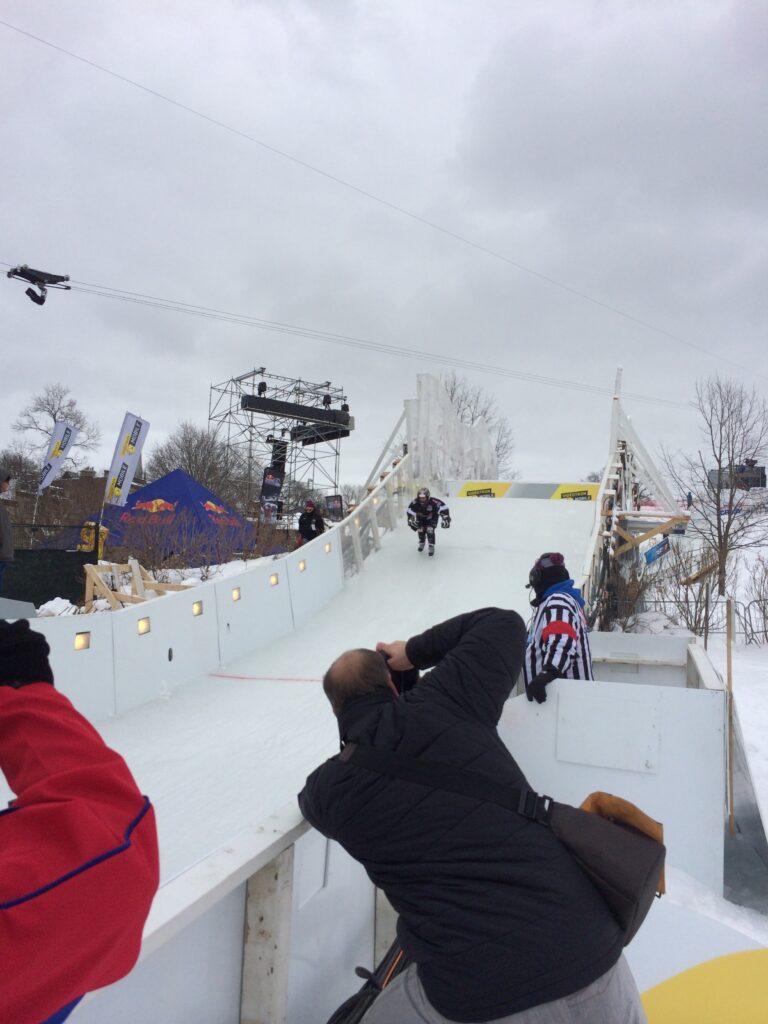
Ice Cross is an adrenaline-fueled winter sport that captivates audiences with its high-speed races down steep, icy tracks. Athletes compete on challenging courses filled with jumps, sharp turns, and various obstacles. Clad in ice skates and protective gear, competitors navigate these thrilling courses, showcasing their speed and skill in a bid to become the fastest on the ice.
Multiple athletes race head-to-head down a track, with the top finishers advancing to the next rounds.
The courses are made entirely of ice and can span hundreds of meters, featuring various technical elements like sharp curves and jumps.
Ice Cross requires a combination of balance, speed, agility, and endurance, making it one of the most exciting and physically demanding ice sports.
The Federation’s training initiatives are designed to foster skills and provide athletes with the tools necessary to compete at national and international levels.

Programs aimed at beginners and youth athletes, focusing on skating skills, safety on the ice, and introductory race strategies.

Tailored for competitive athletes aiming to represent their countries in international championships. This includes on-ice training, video analysis, and tactical racing workshops.

We offer certification for coaches through structured courses, enabling them to teach Ice Cross at various levels while maintaining high standards of safety and performance.
Athletes compete in heats of 4, navigating icy tracks with obstacles and sharp turns. The top 2 finishers from each heat progress to the next round
All tracks must be inspected by the Federation’s Track Safety Committee before competition to ensure compliance with safety standards.
Mandatory protective gear includes helmets, pads, and gloves. Only standard ice hockey skates are permitted.
Athletes must be at least 16 years old, medically certified, and registered with the Federation. Anti-doping regulations aligned with WADA are strictly enforced.
Overtaking is allowed, but unsportsmanlike conduct such as blocking or interference results in time penalties or disqualification.
Any violation of the rules will be reviewed by the Disciplinary Committee, with sanctions ranging from fines to lifetime bans.
For a complete overview of the rules, download the Official Rulebook here:

Equipment must meet Federation specifications, but minor modifications for comfort are allowed as long as safety standards are maintained.
Injured athletes will be treated immediately by on-site medical staff. If the injury is severe, the race may be stopped, and the athlete will be removed from the competition.
All reports should be submitted to the Race Jury or the Federation’s Disciplinary Committee via the official complaint form.